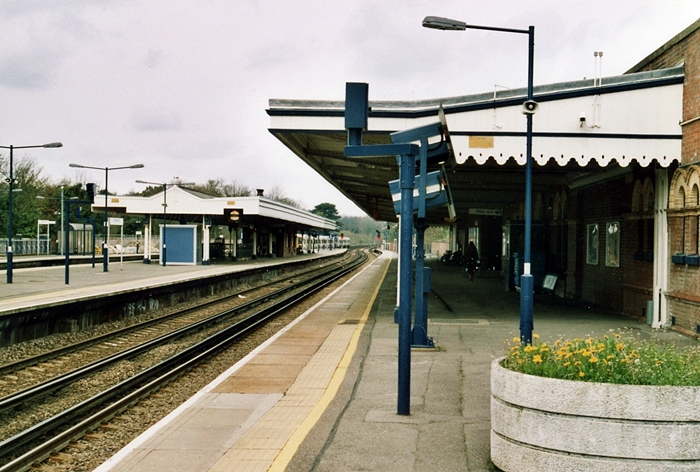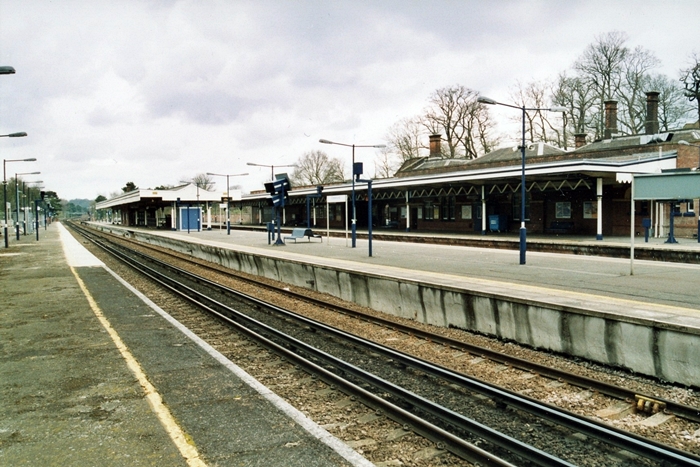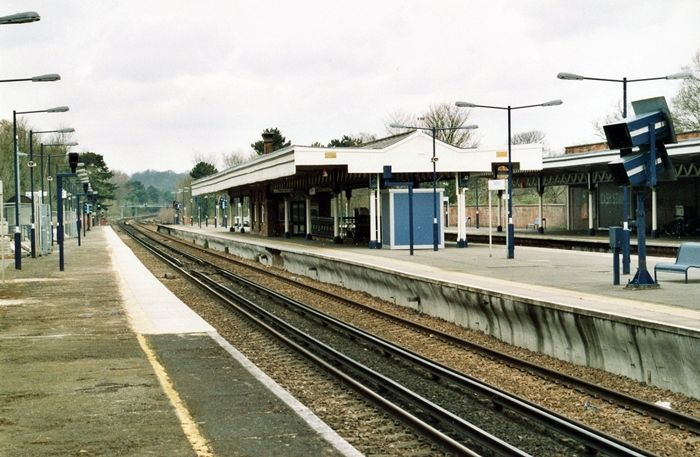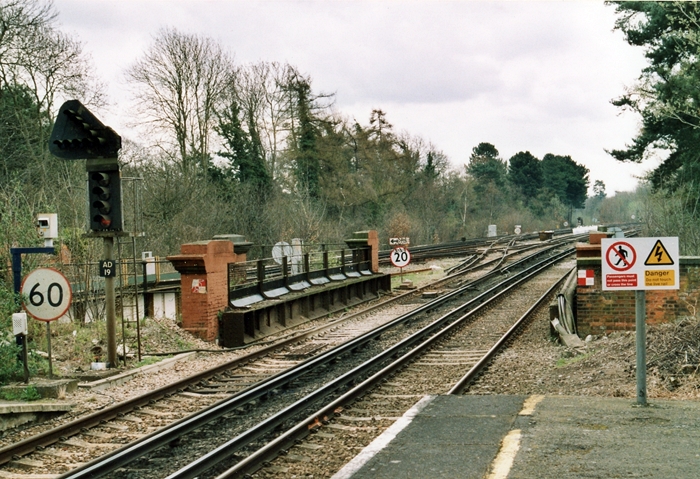
During the works, the goods sidings of 1868 managed to retain an individual SER-designed cabin, although this was transferred over to the ‘’up’’ side. The yard itself was subject to considerable expansion. The original five lines were completely re-arranged to give six much longer sidings. In addition to this, a single-track goods shed came into use at the site, coal stacks emerged alongside the southern-most siding, and locomotives were now provided with watering facilities. A seventh siding, of quite considerable length, was also brought into use on the ‘’down’’ side, this being southward-facing. As far as Chislehurst station itself was concerned, the track bed had to be extended westwards upon an elevated brick base, to accommodate the additional lines, platforms, and the new ‘’up’’ side structure.
Modernisation was swift under the Southern Railway. Holborn Viaduct and Victoria, to Orpington via Bickley Junction, was the first route on the South Eastern Division to receive third rail, electric services beginning on 12th July 1925. This was then extended northwards from Orpington Junction, through Chislehurst, to Charing Cross, completion coming on 28th February 1926, and an electric substation appearing ⅓ mile to the south of the platforms, within the junction complex. In conjunction with this, the gas lamps of the SE&CR at Chislehurst and, indeed, other stations along the line, were replaced with a more recent design of the SR – the company decreed those stations on electrified lines were required to present a modern image, which meant these charming relics had to go! At least the pre-Grouping era station structures and canopies were to remain; these had been suitably enlarged and modernised during the SE&CR’s quadrupling programme. Thus, little else at this station changed during SR ownership – it would be the subsequent nationalised organisation which would implement the most noteworthy of alterations.
Chislehurst lost is mechanical signal boxes and semaphores three years earlier than other stations along the line, such as Hither Green to the north, and Orpington to the south. Despite being on the ex-SER route, it was positioned on the junction with the ‘’Chatham’’ line, the latter of which was subject to re-signalling and electrification in 1959. A ‘’power box’’ was opened within the Chislehurst Junction complex on 31st May of that year, which saw colour lights introduced at the station and, indeed, on the ‘’Chatham’’ main line (excepting that section between Faversham and Dover). Next, in 1965, the station lighting was altered from gas, to electric. When the original Chislehurst station opened in 1865, the SER had made an agreement with the local gas company that it could supply it with the fuel for 100 years. This agreement remained in effect when the station was relocated in 1868. When the contract expired in 1965, the Southern Region immediately changed the type of power supply to electric. On 18th November 1968, the goods yard was subject to closure, it having already lost is signal box during the 1959 re-signalling of the area. Both the "up" and island platforms' canopies were halved in length, and that on the "down" side lost most of its valance. The island platform also lost brick-built offices which were formerly situated under the removed section of canopy.
Around the late 1970s, further structural economies were enacted at Chislehurst: the ‘’up’’ side station building, erected during the SE&CR quadrupling, was demolished, as was the remaining section of the canopy on this platform. The latest string of modifications date from 1992: the platforms were lengthened at their northern ends by 120 feet to accommodate the proposed twelve-vehicle ‘’Networker’’ formations and a bus shelter appeared on the ‘’up’’ side.

The "down" side remains essentially in the state it was in the 1971 photograph, although with spruced up canopy, this of which was still lacking most of its valance. The electric lighting had also been modernised in the meantime. © David Glasspool

The platform beside the "up" fast line, from where this photograph was taken, is somewhat of a barren land now, devoid of any substantial buildings and home to just a solitary glazed shelter. © David Glasspool

The later end valance affixed to the truncated island canopy has since had sections cut out, to aid vision of signals. One of these is a banner repeater, which can be seen underslung from the canopy's right-hand side. © David Glasspool

Beyond the bridge in this southward view is a diamond crossing which links the ''fast'' and ''slow'' lines, these being on the right and left respectively. Further still is Chislehurst Junction. © David Glasspool
Return to the Kent Rail Homepage or alternatively, check for Updates.
Website & Copyright information - Links - Contact the Webmaster